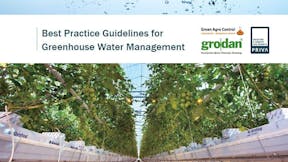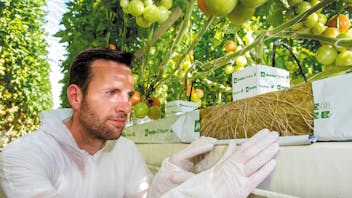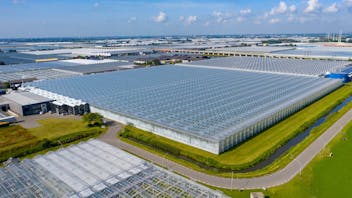By far the easiest way to reduce the discharge of drain water to is to work with a high quality primary water supply and low drain volumes (Table 2). Substrate design and knowledge has improved over the years. Drain should no longer be the “goal” but a result of a structured, managed approach towards irrigation (Chapter 3). This chapter describes how this drain can be collected, cleaned and recycled in order to reduce the input of fertilizer and contribute to a sustainable cultivation. Of greatest concern to many growers when recycling drain water is the risk of spreading diseases. Therefore care should be taken that any pathogens and growth inhibitors are removed. It is also recommended to regularly monitor the total concentrations of individual nutrients and their ratios in the drain water so the input of new nutrients can be optimized (Chapter 6). Reasons to clean the drain water There are several root-infecting pathogens such as Pythium and Phytophthora which are distributed through the greenhouse via recirculation water. To avoid the dispersal of pathogens via drain water, the water needs to be disinfected before being re-used. Also growth inhibition is perceived as a barrier for recirculation. Growth inhibition is often reported in flower cultures lasting longer than a year. Exactly what is causing the growth inhibition is still unclear. Sometimes certain bacteria seem to be involved. At other times, proper steering and control measures are enough to prevent growth inhibition. Also in the event drain water needs to be discharged into the sewage system or environment, it is recommended to first treat the drain water via advanced oxidation. In this way residues of plant protection products which were not absorbed by the crop or not yet broken down chemically are removed. Please note by January 1st 2018 this will be mandatory for Dutch growers.
Methods to clean the drain water
Drain water is collected firstly into the ‘dirty’ drain water basin. Cleaning consists of two phases: (1) removing the large particles, and (2) purifying the water of pathogens, growth inhibiting factors and plant protection products. The first step traditionally involved sand filters to remove fine particles. More recently mechanical screen filters have been introduced. The advantage of these filtration techniques is that they require only a fraction of rinsing water compared to sand filters. The second step in the process involves techniques such as heating, UV-radiation or advanced oxidation.

Best Practice Guidelines for Greenhouse Water Management
This guide has been written to provide greenhouse owners and managers with an overview of the current best practices for the application and recycling of water and nutrients in the greenhouse.







